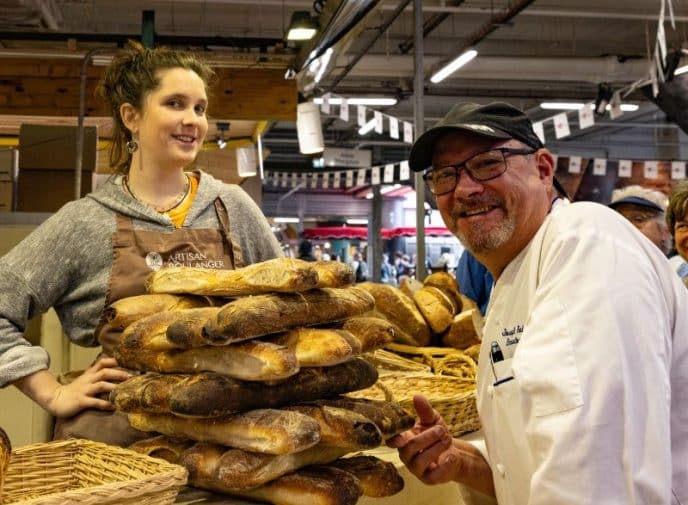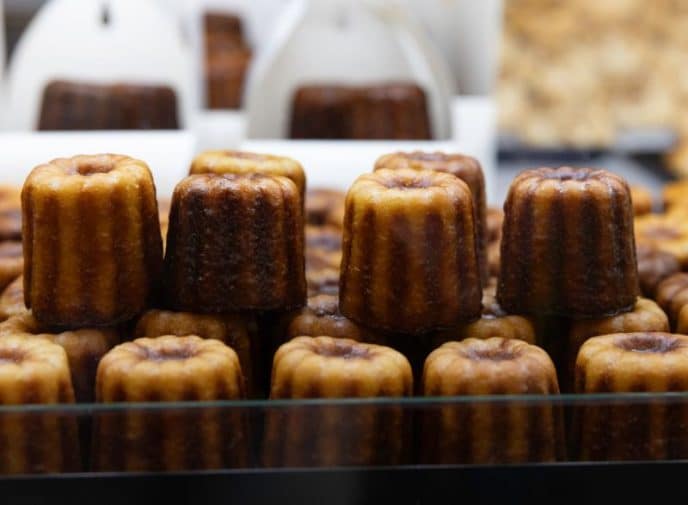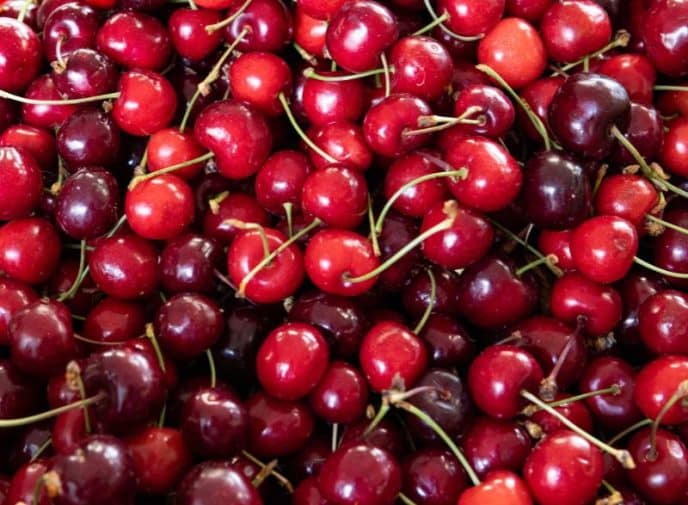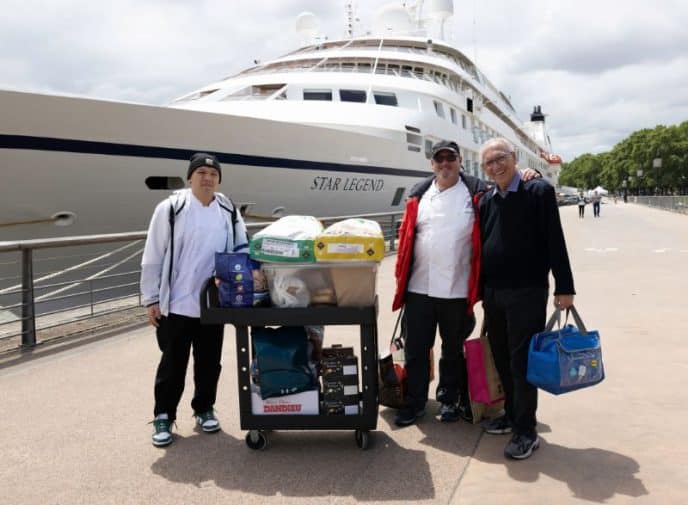“We are entering the heart of Bordeaux,” says legendary chef Joseph Kalynuik as we gather at the entrance of Bordeaux’s largest market, the Marché des Capucins, founded in 1749 and named after the Capuchin monks who once lived in the area.
“Over the next few hours we will be selecting produce to share with everyone on board over the next few days.”
It was Saturday morning on our 11-day James Beard Foundation cruise through Portugal, Spain, and France. “Shopping with a Chef” is a free excursion offered on select itineraries (when possible). In addition to Chef Joseph, our shopping entourage included 20 enthusiastic guests: James Beard celebrity chef Tanya Holland, Peter Tobler, Director of Hospitality Operations for Windstar Cruises, local guide Emmeline, and Emile, who coordinated the movement of bags, boxes, and carts filled with gourmet food.

“The market is where the locals go to shop and socialize,” says Emmeline, who has lived here for 30 years. She goes on to explain that the market used to be much bigger and has undergone many changes over the centuries. However, the essence of the market has always remained the same – “feeding the people of Bordeaux.”
Like most of us, this is Chef Joseph’s first foray into the market. “I’m looking for local flavors, food that tells a local story,” he says. He also hopes to add flavor to the dishes that Windstar chefs prepare on board by incorporating local delicacies.
Local knowledge is invaluable, and Emmeline leads us through colorful aisles to our first stop, a stand specializing in “Bordeaux canelée.” Canelée means “groove” in French, and the glass case is filled with rows of golden, gooey-on-the-outside, soft-on-the-inside pastries baked in traditional copper molds.

While carefully packaging these sweet treats, Emmeline tells the legend of Canari. “Canari was invented by the nuns of the Anosiades Monastery in the 18th century.day In the 18th century, they started using this recipe to help the poor. They used whatever they could find, like rum, vanilla, and egg yolks. The recipe was forgotten during the French Revolution, but later revived as a Bordeaux flavor.”
“I want £250,” Joseph the cook said to the waitress, who looked confused, as if she had misheard.
We’re at La Ronde des Fromages, where Chef Joseph is examining the beautiful displays. “There are some beautiful cheeses here,” he says. “Some I’m familiar with, some I’m not.”
After careful consideration, I chose Tomme aux Fleurs (a beautiful semi-hard cheese adorned with edible flowers), the bright yellow Shropshire Blue, the Brebis Corse Filet made with goat’s milk, and the delicious-looking soft truffled Brie. Witnessing the way Chef Joseph carefully selected ingredients made me realize why every meal on board is so delicious.
Emmeline suggested we stop by Amandine’s Bakery before they run out of bread. “This bakery is over 100 years old and they bake their bread in a wood-fired oven,” she said. A huge stack of crusty baguettes immediately caught everyone’s attention, and Chef Joseph quickly said he was going to buy all of it.

A line formed at the fishmonger, as Chef Joseph patiently waited to buy three large sea bass and shrimp. Then, customers moved to the rows of fresh produce stands to buy seasonal fruits and vegetables. Cherries and peaches were popular products at the market, and Chef Tanya found a stand specializing in microgreens that sold arugula—a hard-to-find cousin of rocket that has a nutty, rich flavor but a slightly tart flavor.
At The Pork Specialist booth, Chef Joseph’s eyes light up when he sees gratton, a casserole dish that brings back memories of his childhood. “It’s called ‘snout to tail’ and every part of the pig is used. My grandfather used to add sweet onions, butter and Nanny’s homemade sauce to make sandwiches.”
The artisanal olive stand is everyone’s favorite. Buckets filled with olives come in all shapes and sizes, some are stuffed with things like white anchovies, pickled garlic, lemon slices or almonds, and some are soaked in herb oil or chili peppers. After careful consideration, the chefs decided to offer a variety of flavors to suit the preferences of different passengers.
With bags and boxes full, Chef Joseph’s money spent, and 45 minutes to wander the market on our own, a few of us headed straight for the must-do “Bordeaux Trip” experience: oysters and wine. Sitting on a stool at Chez Jean-Mi, a market café where people lined up to eat and oysters were shucked right before your eyes, I sipped a crisp white Bordeaux and savored every velvety bite.

On the way back to Star Trek, the bus was filled with excited conversation. “This was the best trip I’ve ever taken.” “This is exactly what I came here for.” “It was awesome.”
Over the next few days, produce from the Marché des Capucins added another dimension to Windstar’s fine dining scene. Canari was a nightly surprise, baguette slices were placed in the bread basket at Amphora, and the fruit selection at breakfast included “donut”-shaped peaches. Then came the highlight – a spectacularly curated local Bordeaux wine tasting table at Veranda during two lunchtimes.
From the light earthiness of the truffled cheese squeezed onto the bread, to the texture of the sea bass served ceviche-style, the sweetness of the plump cherries, the richness of the duck sausage, the aromatic essence of the tomme aux fleurs cheese and the simplicity of the stuffed olives, every bite reminded me of the Marché des Capucins, which captures a strong sense of place and the “door-to-plate” tradition of Bordeaux cuisine.







